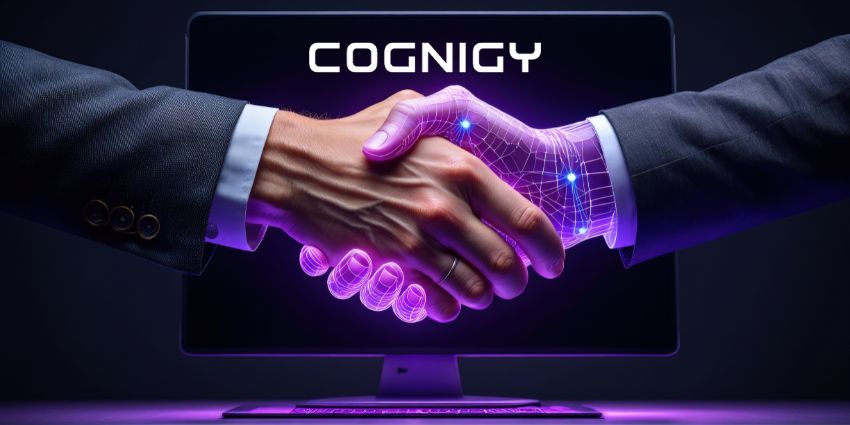The rise of generative AI promised to be a game changer. Some even compared it to the dawn of the internet, smartphones, and the cloud.
Yet, the hype has not faded away. If anything, tech providers are becoming more excited by the potential for innovation it brings.
Contact center vendors are no exception. Already they are churning out generative AI-powered solutions that aim to transform customer service operations.
Here are seven of the best examples so far.
1. Talkdesk Streamlines Post-Contact Processing
Post-contact processing includes all the tasks that agents complete once an interaction ends.
These tasks include ticket tagging, summarizing the contact, and sending follow-ups.
Talkdesk aims to use GPT models to automate more of these tasks and reduce handling times.
Indeed, the vendor has already launched a call summarization solution that integrates GPT services into its NLP systems.
In doing so, the solution automatically summarizes and classifies customer conversations.
Other CCaaS vendors – including NICE and Five9 – have also launched similar solutions.
2. Salesforce Auto-Generates Knowledge Articles
Salesforce has teased Einstein GPT, bringing generative AI to Service Cloud – its contact center CRM platform.
One use case is to have Einstein GPT parse through transcripts of customer conversations stored within Service Cloud. It then auto-generates knowledge articles for review.
An experienced agent can then evaluate, tweak, and publish these within the Service Cloud’s knowledge base.
As such, contact centers can enhance knowledge management processes.
Meanwhile, when relevant, the agent-assist tools already within Service Cloud can proactively serve up these knowledge articles during live customer conversations.
3. Five9 Pinpoints Automation Opportunities
Alongside an auto-summarization tool to speed up post-contact processing, Five9 has teased another GPT-powered solution: AI Insights.
AI Insights clusters customer conversations together by various traits, such as intent.
It then looks for patterns within these groups, pinpointing process improvement and automation opportunities.
By highlighting how often these opportunities crop up in conversations, contact centers can quantify the potential cost savings in addressing the issue.
4. Google Simplifies Bot-Building
Google Cloud has created a Generative AI App Builder, which it plans to embed into its CCaaS solution: the Contact Center AI Platform.
With this, contact centers can “build a bot within minutes,” according to Google.
First, the customer must feed it with agent support content, website information, product manual, FAQs, and other sources of knowledge.
After, the creator can type – in natural language – which tasks it should perform, what information the bot should collect, and which APIs it should send data to.
From there, it auto-generates a virtual agent that the business can evaluate, optimize, and deploy.
5. Nuance Increases the Scope for Conversational AI
Nuance has added a “conversation booster” to its conversational AI platform: Nuance Mix.
The feature improves the platform in two significant ways: it answers more queries and detects when the customer’s intent changes.
First, the solution parses through business-specific resources – including the company website, product manuals, and knowledge articles.
Then, it spotlights relevant insights and presents them to the customer, allowing the conversational AI to resolve queries the business hasn’t specifically built a bot to answer.
Second, it detects when a customer’s intent changes midway through an interaction, pulling the conversation back on track and enhancing containment rates.
6. InMoment Draws Insights from Customer Feedback
InMoment became the first voice of the customer (VoC) vendor to launch a GPT-powered solution with its Smart Summary Generator.
The tool gathers disparate sources of customer feedback and strips away trends, turning them into structured and concise text.
Such sources include contact center transcripts, online reviews, and surveys.
According to InMoment, it takes only minutes to generate a trends overview. As such, contact centers can use the Smart Summary Generator to keep tabs on emerging issues.
7. NICE Alerts Supervisors to Agent Issues
NICE Enlighten is a collection of AI models embedded within the NICE CXone solution, aiming to deliver insights to contact center managers.
Now, NICE has released Enlighten Actions, which harnesses generative AI to turn insight into action.
For instance, Enlighten may detect when customer satisfaction is low in real-time. By alerting the supervisor, they can step in to save the experience.
It may also alert the supervisor when an agent exhibits a particular behavior and report complaints as they occur. The latter use case can aid contact center reporting efforts.
What Else Is Possible?
These are only some of the many use cases contact center vendors have launched in recent months.
Indeed, EvaluAgent has released a tool to enhance its auto-QA solution. Meanwhile, Calabrio is collaborating with OpenAI to augment its WFM offerings.
Yet, many more capabilities will soon come to the fore, as GPT also has significant potential to bolster custom data charting, trending, and routing use cases.
Moreover, expect it to change the low-code tools that many contact centers use to build solutions for self-service, proactive outreach campaigns, and bots.
As evident in the Google example, the ability to use natural language – instead of static drag-and-drop elements – may shake up the field.
Finally, the recent launch of the next iteration of ChatGPT – GPT-4 – brings even more possibilities.
Indeed, it comes with three exciting new features. These include the ability to mimic a user’s writing style, analyze and classify images, and handle larger text inputs.
Nevertheless, for now, expect all use cases to keep a human-in-the-loop.
After all, despite all the promise of the large language models that power generative AI applications, they are prone to mistakes.
As such, they are not yet ready to be let loose on customers without someone in the middle.







